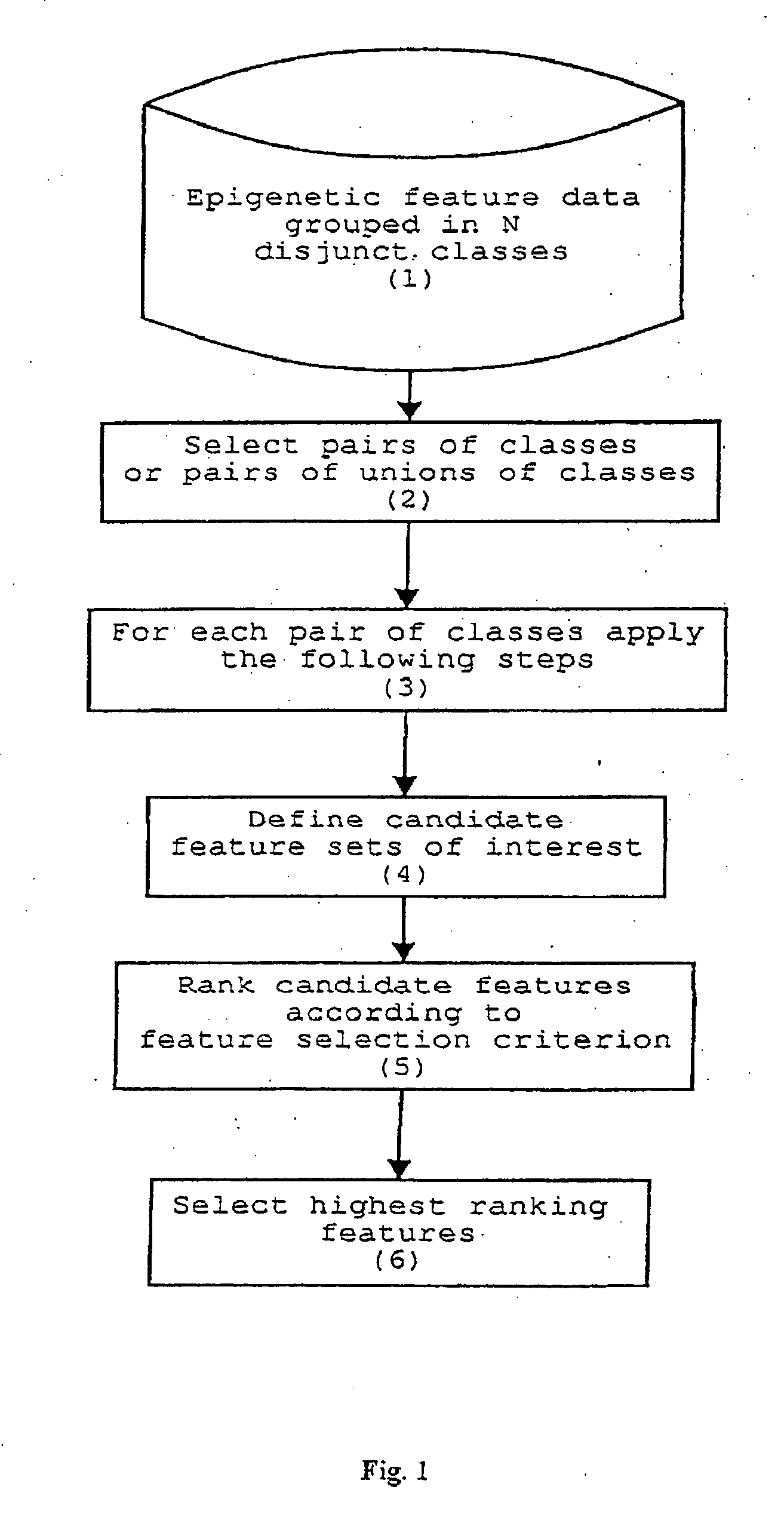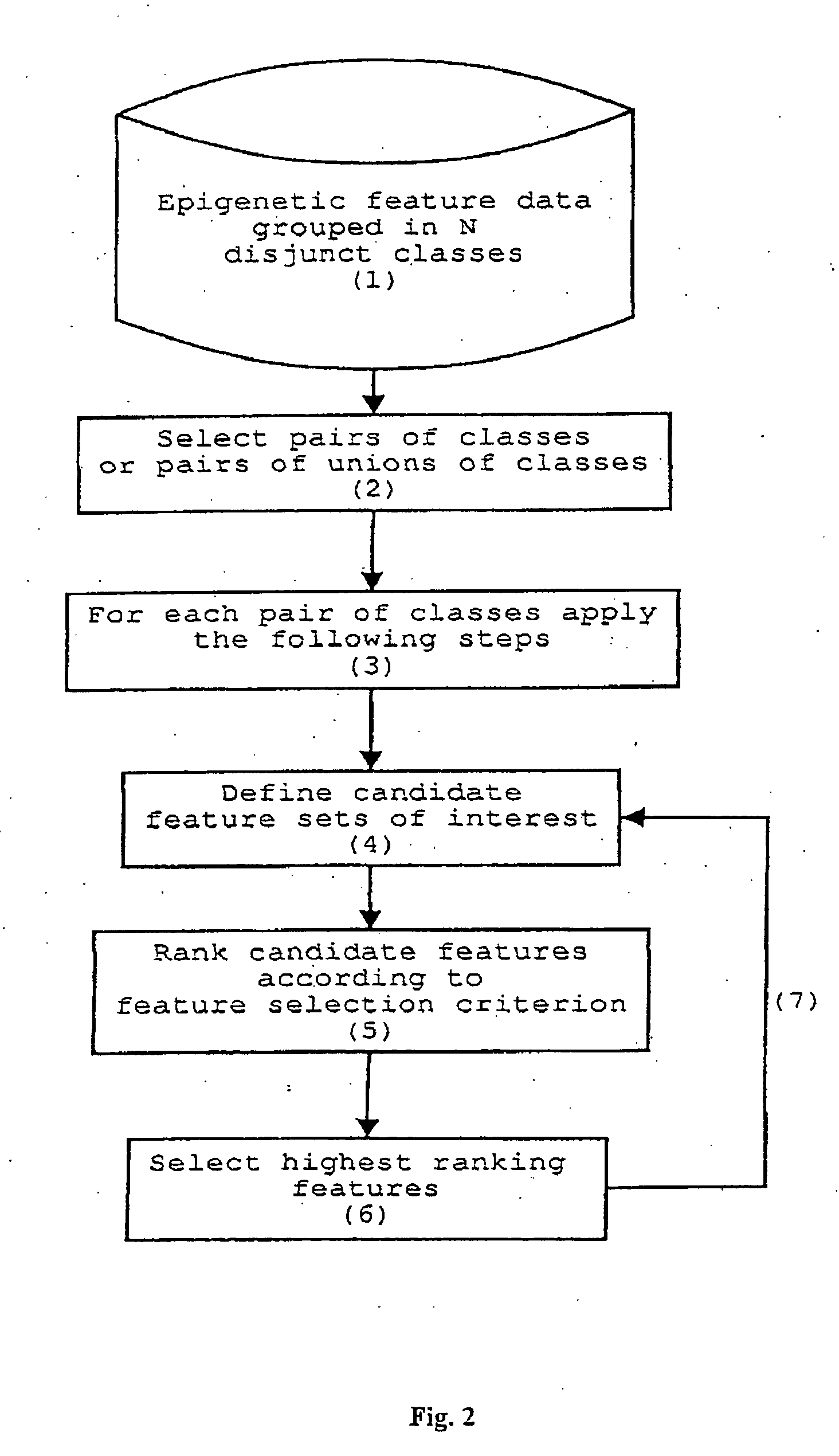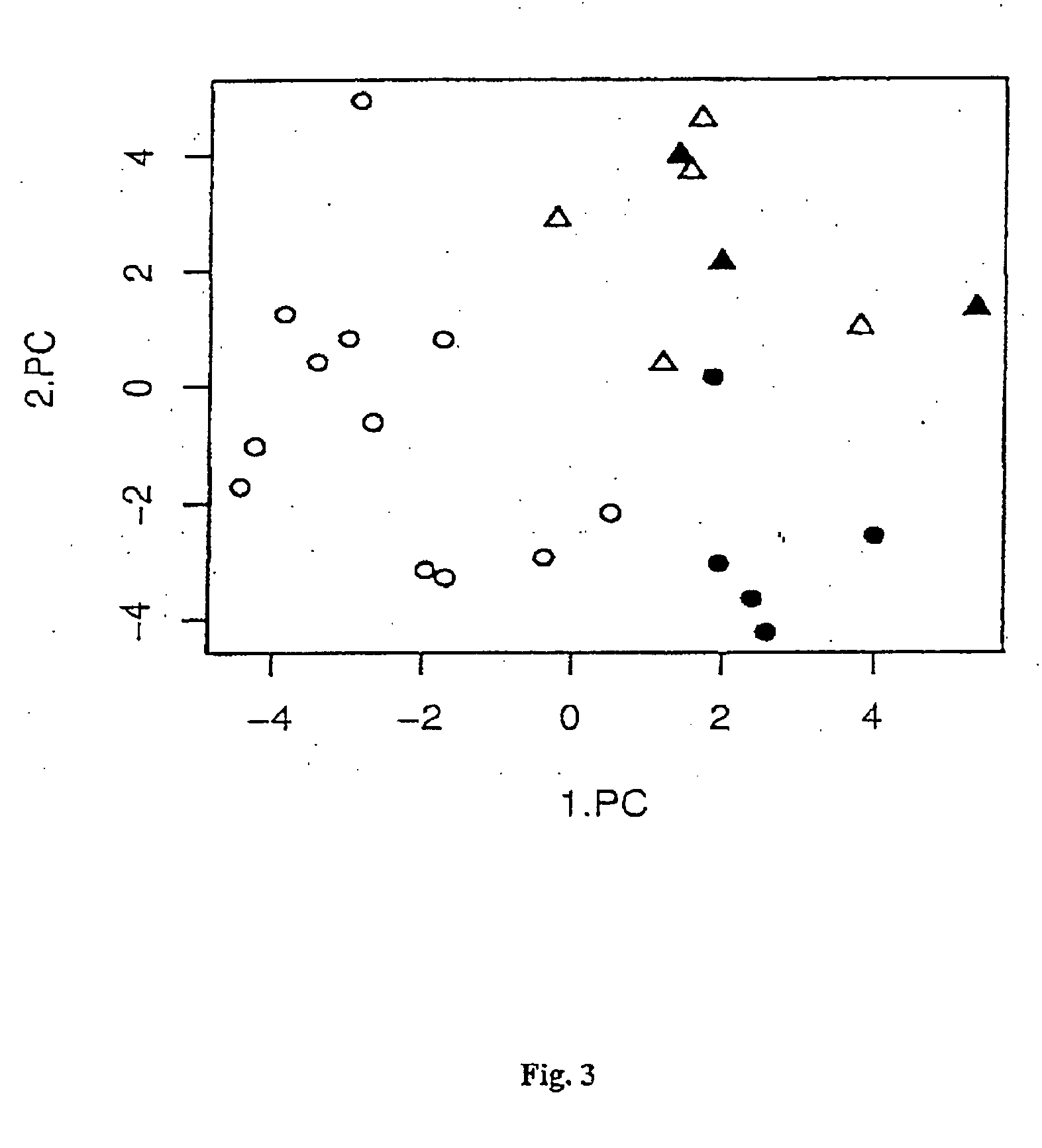Method for epigenetic feature selection
a technology of epigenetic features and computer program products, applied in the direction of material testing goods, biochemistry apparatus and processes, instruments, etc., can solve the problems of affecting and primarily affecting the large-scale analysis of mrna-based microarrays. achieve the effect of improving the performance of machine learning classifiers
- Summary
- Abstract
- Description
- Claims
- Application Information
AI Technical Summary
Benefits of technology
Problems solved by technology
Method used
Image
Examples
example 2
[0160] In the following samples obtained from patients with colon cancer were chosen to test if classification can be achieved solely based on DNA methylation patterns.
[0161] DNA samples were extracted using lysis buffer from Qiagen and the Roche magnetic separation kit for genomic DNA isolation. DNA samples were also extracted using Qiagen Genomic Tip-100 columns, as well as the MagnaPure device and Roche reagents. All samples were quantitated using spectrophotometric or fluorometric techniques and on agarose gels for a subset of samples.
[0162] Bisulfite Treatment and mPCR
[0163] Total genomic DNA of all samples was bisulfite treated converting unmethylated cytosines to uracil. Methylated cytosines remained conserved. Bisulfite treatment was performed with minor modifications according to the protocol described in Olek et al. (1996). In order to avoid processing all samples with the same biological background together resulting in a potential process-bias in the data later on, the s...
PUM
| Property | Measurement | Unit |
|---|---|---|
| total volume | aaaaa | aaaaa |
| temperature | aaaaa | aaaaa |
| temperature | aaaaa | aaaaa |
Abstract
Description
Claims
Application Information
 Login to View More
Login to View More - R&D
- Intellectual Property
- Life Sciences
- Materials
- Tech Scout
- Unparalleled Data Quality
- Higher Quality Content
- 60% Fewer Hallucinations
Browse by: Latest US Patents, China's latest patents, Technical Efficacy Thesaurus, Application Domain, Technology Topic, Popular Technical Reports.
© 2025 PatSnap. All rights reserved.Legal|Privacy policy|Modern Slavery Act Transparency Statement|Sitemap|About US| Contact US: help@patsnap.com



